Thaiwan pink guava is a fruit that is very much rich in nutrients. A successful young farmer from Kurnool district, Andhra Pradesh, made his Thaiwan pink guava business boom. We will now learn about his experiences, the cultivation details of Thaiwan pink guava plants, and the demand and profits of Mr. Pranay’s Thaiwan pink guava farm. Let’s check out how this farmer earning 60 lakh rupees from thaiwan pink guava cultivation below.
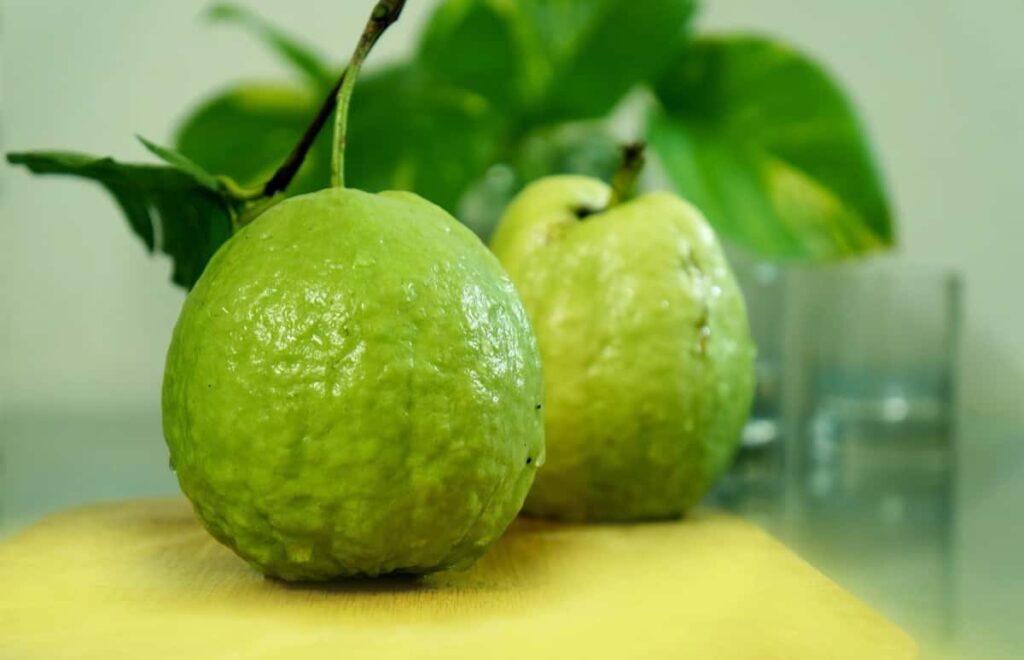
Why is Thaiwan pink guava popular?
Thaiwan guava is consistently well-received by guava growers. The reason for this is the plant’s reliably fruiting nature, with two harvest seasons each year (in March/April and July/August). The sweetness of thaiwan guava is another distinguishing feature. Due to its high ascorbic acid concentration, this guava fruit is highly regarded domestically and internationally, commanding a premium price for its high-quality fruits.
It’s safe to say that each fruit is between 250 and 300 grams. Foreign purchasers often choose this size over larger ones. At maturity, the fruit has a pale green appearance. Taiwan guava trees typically grow between 2.5 and 3 meters tall, with a canopy size of 2.0 to 2.5 meters in diameter.
What type of soil is suitable for Thaiwan pink guava farming?
Due to their resilience, Taiwan guava plants can thrive in various soil types, from compacted clay to loose, sandy soils. However, they require deep, loamy, and friable soils to produce a high yield. Root rot disease is caused by waterlogging and should be avoided. Growing Taiwan guava fruits is best accomplished in river basins with a pH range of 4.5 to 7.0 and a soil mix of that range. To grow guavas for profit, you should get a soil test. Soil tests can help determine the nutrients needed to fill any nutrient gaps.
In case you missed it: How this Farmer Earning 80000 Rupees from Spirulina Cultivation: Success Story of a Young Farmer in India
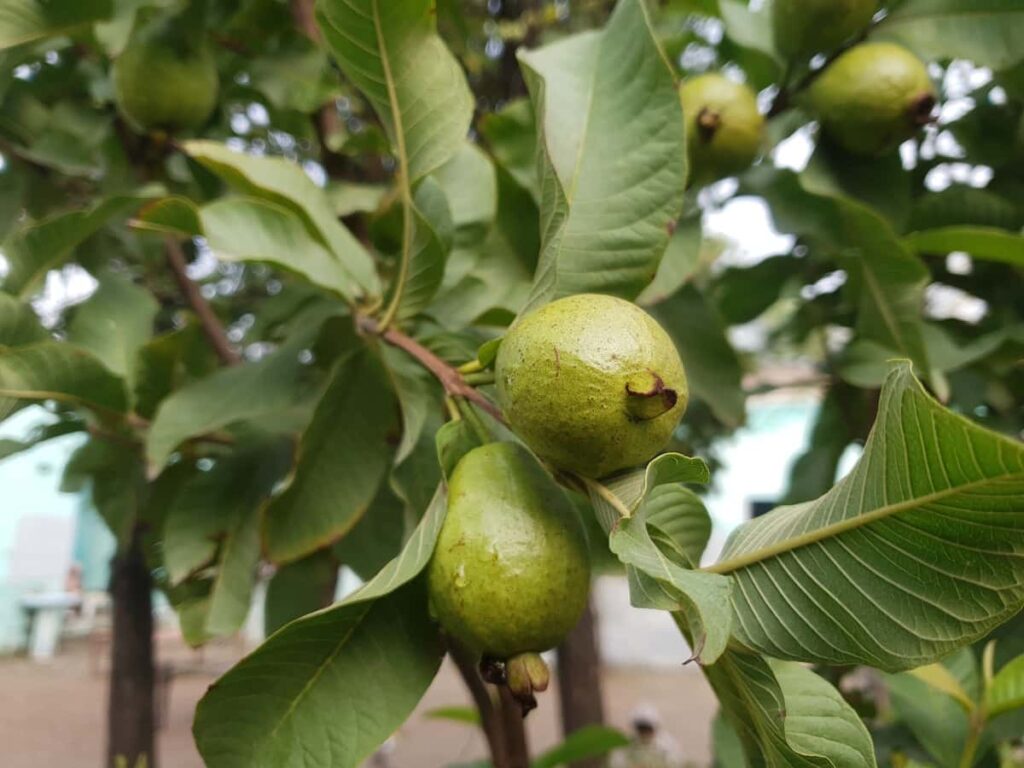
How to dig pits for Thaiwan guava farming?
The pits are dug a month before planting, with dimensions of 2′ x 2′ x 2″ BLD, and left to dry until planting day. Each pit is dug to a depth of 45 centimeters. Then the topsoil is mixed with 10 kilograms of farm yard manure, 100 grams of urea, 100 grams of potassium, and 2.0 kilograms of super phosphate before a Thai guava seedling is planted in the center with its graft union exposed from the soil level inside the pit.
The hole should be dug to a depth of between 15 and 20 centimeters below the surrounding field surface, where the seedlings will eventually be placed. Plants are then watered, and 250-500 grams of powdered farmyard manure with neem cake are put into each pit as biofertilizers and bioinsecticides.
How to prepare land for Thaiwan pink guava farming?
The soil has to be prepared for planting by being harrowed, carefully plowed, and leveled. To ensure success, you must till the soil to a fine tilth. Weeds from earlier plantings must be eradicated, and the area must be prepared so that water may flow freely. If the soil lacks fertility, it is recommended that well-composted farmyard manure (FMY) be spread throughout the surface.
This organic manure should be added during the final plowing when preparing the soil to grow Taiwan’s pink guava. A trench of 1m x 1m x 1m should be dug, and then the surface soil should be mixed with either 25 kg of garden compost or FMY.
In case you missed it: How this Farmer Earning 60 Thousand Rupees from Milky Mushroom Farm at Home
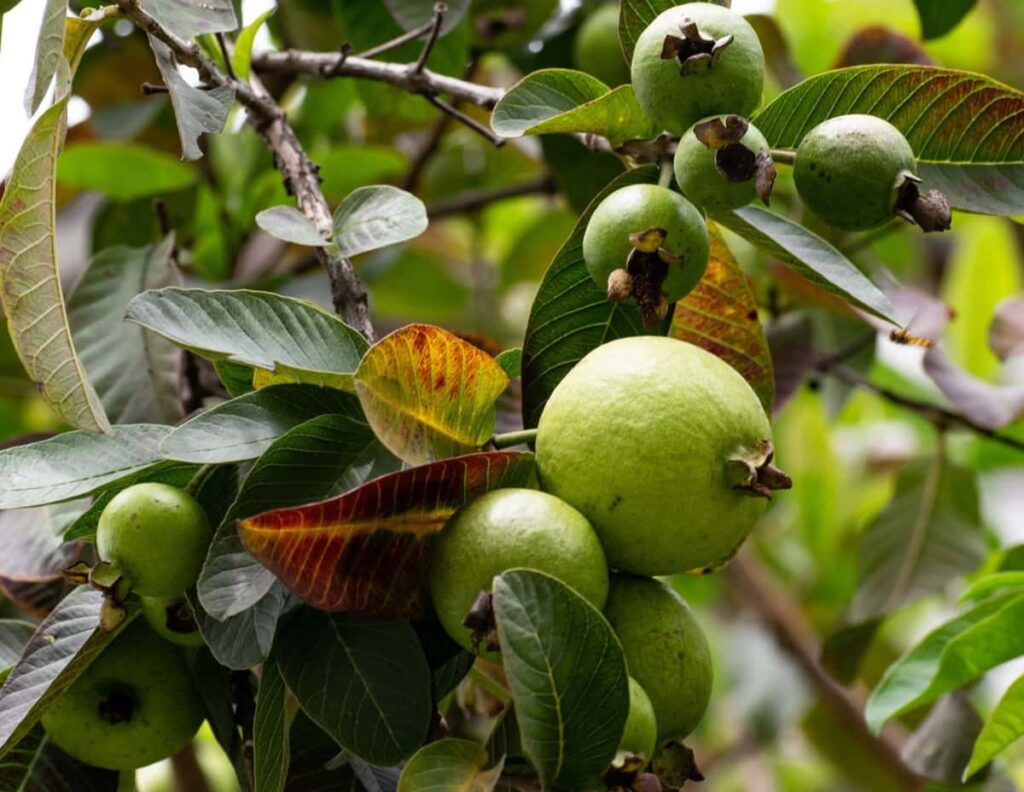
Is pruning required for Thaiwan Pink Guava plant cultivation?
When the plant is 75–80 cm tall, prune it, so its upper leaves are only 50–60 cm above the ground. To put it another way, this will encourage the main scaffold to branch out. When the side branch reaches 30–40 cm in length, only the strongest 3–4 branches should be kept; the rest should be pruned away, creating an umbrella shape with the maintained branches. If you want to save the mature brown twigs from each principal branch, you should prune the rest down to around 20 centimeters in length.
Additionally, each major branch is encouraged to sprout other branches. Pruning the secondary branches follows the same pattern as the main branches; each major branch should have room for two or three secondary branches, and each secondary branch should undergo a last, gentle pruning to create tertiary branches. This will train the Thai guava tree to develop a luscious canopy that will reward you with beautiful blooms and tasty fruit.
How to water the Thaiwan pink Guava plant?
Thaiwan pink guava trees need consistent soil moisture to thrive, especially during the dry season (December–May). However, despite the wet season, guava plantations in Taiwan need no additional watering. When and how often you water, a plant is often determined by the plant’s age and growth stage. As soon as possible after planting in the field, the initial watering should be applied to help the roots become established in the soil. A Taiwan pink guava tree typically needs between 15 and 30 liters of water daily.
When water is scarce, drip irrigation can be used to great effect. Horticulture programs in the area will subsidize commercial producers’ use of drip irrigation for Taiwan’s pink guava trees. The drip irrigation system is set up.
In case you missed it: How this Farmer Earning 5.5 Lakh Rupees from His Snake Gourd Farm: A Success Story of a Vegetable Farmer In India
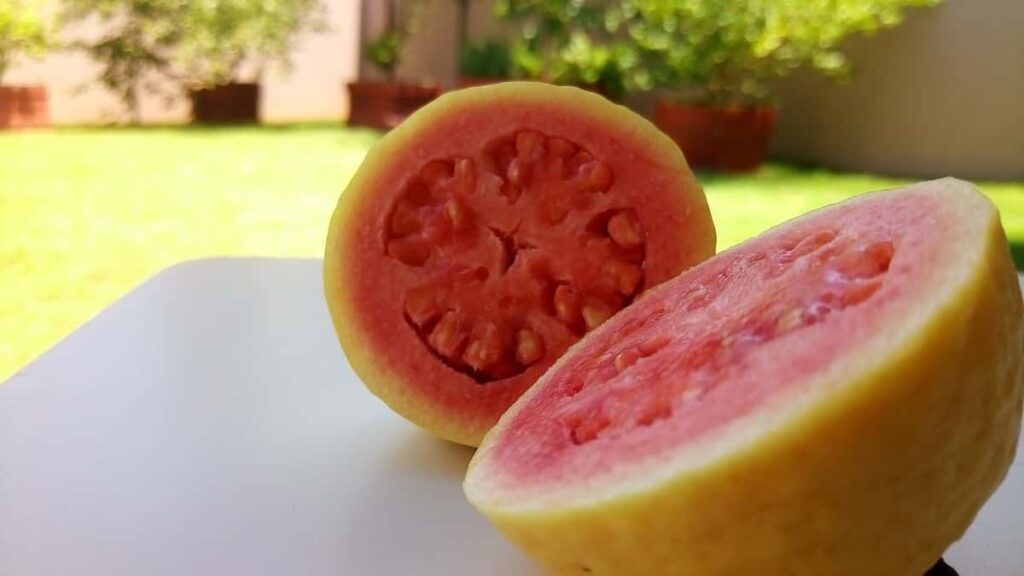
How this farmer earning 60 lakh rupees from Thaiwan pink guava cultivation
The success story of Mr. Pranay
Mr. Pranay from Kurnool, Andhra Pradesh, used to work as an engineer in the IT industry. He used to work from home. As this gave him much free time, he wanted to start cultivating something different. Mr. Pranay’s family owned 10 acres of land, which was empty. So he tried to start some venture in that land. When thinking of what to cultivate, he came across many crops and vegetables, but nothing caught his attention.
When he was specifically searching for fruits, he learned about Thaiwan pink guava cultivation, which requires less maintenance and will yield more. When investigating the demand, he found a massive demand for these vegetables in supermarkets. He searched and learned how to cultivate these fruits online and started his own Thaiwan pink guava fruit cultivation on 3 acres of his 10-acre farm.
At the start, he was still confused about how everything will turn out. He took care of every minute detail and started cultivating the crops, and the result was exceptional. He expanded his farm from 3 acres to 10 acres. He was earning more than he had ever imagined. How his Thaiwan pink guava cultivation became a huge success, what are the cultivation details of the Thaiwan pink guava crop, and the investment and profit analysis will be seen below in this success story.
Thaiwan pink guava cultivation details, according to Mr. Pranay.
Thaiwan pink guava fruit cultivation doesn’t require any particular type of soil. This can be grown in black and red soil, says Mr. Pranay. As his land is of red soil, he cultivates the crop in red soil. Mr. Pranay uses Thaiwan gold variety guava seeds on his farm. This is a light pink variety that has fewer seeds and can grow to a size of 300 to 500 grams. This type also has a shiny appearance, says Mr. Pranay.
The parent plants are bought from Kolkata, and the grafting process is done from the 3-year parent plants under Mr. Pranay’s supervision. The parent plants are the most important. While choosing the parent plant, you must take the necessary measures to ensure that the plant is healthy. The parent plant should yield high quality and high quantity fruits and be mostly disease resistant. If your parent plants are healthy, all the plants will automatically be healthy.
In case you missed it: How this Farmer Earning 7 Lakh Rupees from his Ivy Gourd Farm: A Success Story for Beginners
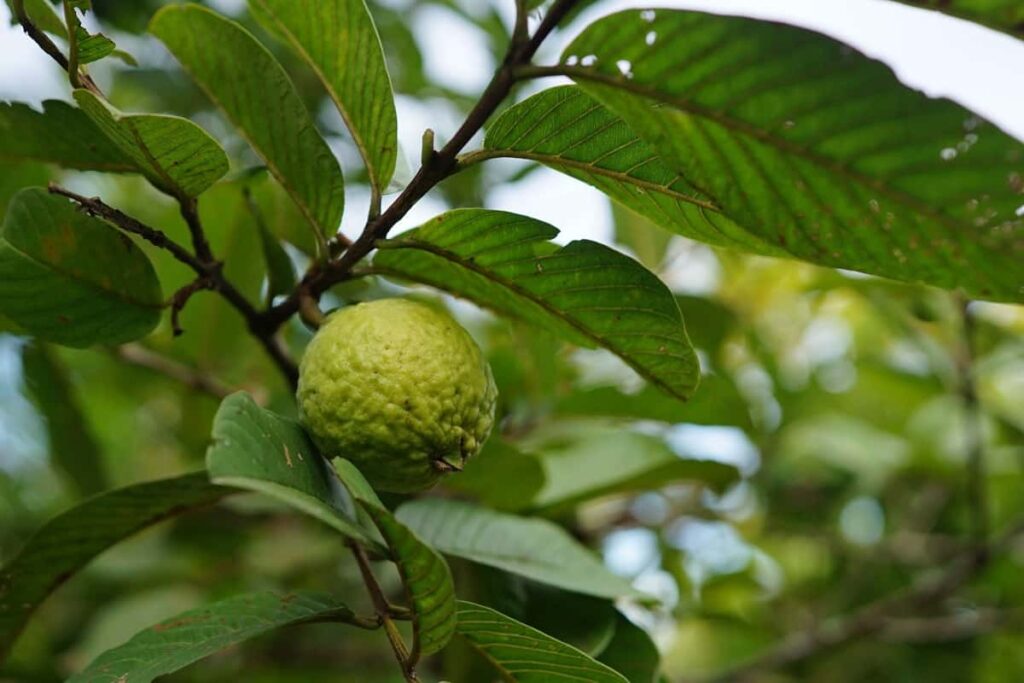
Mr. Pranay says that Thaiwan guava can be grown in any type of climate. It doesn’t have any particular preferences when it comes to weather. You just have to ensure that trenches are dug in the farm in the rainy season so that water cannot stay near the plants. If not, the plant can get exposed to fungal diseases. But there is one thing you must take care of sunburn. Sunburn is a condition that makes the fruit lose its color and turn brownish near some spots.
This happens in summer when the sun is very hot. To escape this, you can cover your fruits with a cover. Each fruit should be put into a cover, and the cover should be tied to the fruit. This helps the plants escape the sun. This problem only applies to the fruit and not to the plant. Thaiwan guava plant can be able to bear any amount of temperature, says Mr. Pranay. The only problem while growing the Thaiwan guava variety is weeds.
Weeds can appear more because of the moisture, so from time to time, measures to be taken to eradicate the weeds. Weeds grow near the stems of the plants competing with plants for nutrients. This can hinder the plant’s development. So measures must be taken to eradicate weeds. You can also use mulching covers to eliminate weeds, says Mr. Pranay. Mulching covers won’t let any weeds grow near the plant’s stem. You can expect more than 40 to 50 fruits from each plant, says Mr. Pranay.
Mr. Pranay says he used drip irrigation on his farm for watering. Sprinkler irrigation is not suitable as these plants grow to a bigger size. Drip watering is ideal for growing these plants, says Mr. Pranay. He added that you save water using drip irrigation. For young plants, the water is released for two hours once in two days, and for larger ones, once in 3 to 4 days. These plants are attacked by thrips when it comes to pests and diseases.
To prevent this, the plants are sprayed with Confidor insecticide. Additionally, mealy bugs are also a problem for this plant, to control that many insecticides are available on the market. Besides these, no other pests and diseases attack the crop, says Mr. Pranay. When the plants mature, you can harvest nearly 40 to 50 kgs of fruits from each plant. Once harvested, these fruits can stay as they are for two weeks even though Mr. Pranay sends them to the supermarkets on the same day of the harvesting. He expects nearly 40 tons per acre.
In case you missed it: How this Farmer Earning 25 Lakh Rupees from his Bitter Gourd Farm: A Success Story to Inspire
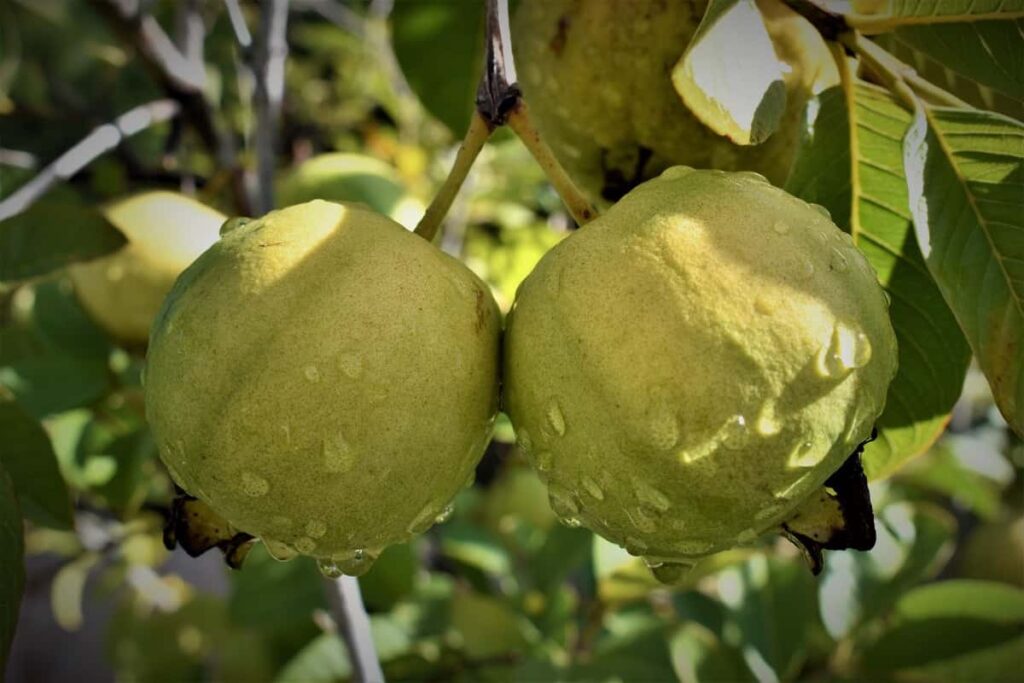
Investment and profit analysis of Mr. Pranay’s farm
Regarding investment, for Mr. Pranay, it took him nearly 3 lakh rupees per acre. This investment includes the sapling cost, drip cost, manure cost, and also labor. So when you take his initial 3-acre farm, it took him nearly 9 lakh rupees as an investment for his whole farm. When it comes to income, Mr. Pranay says that for each acre, his income is almost 20 lakh rupees. This means that his income is nearly 60 lakh rupees for his whole farm.
When the investment is erased from the total income, he earns almost 51 lakh rupees as a profit from his 3-acre farm. This is a huge amount for a farmer cultivating only 3 acres. Mr. Pranay says he has been very happy since starting the business. He says that this business gave him a lot of reputation in his village, and he is very much looking forward to guiding people into this business. He suggests young people enter such lucrative farming ventures as they have high demand in the market right now.
- Economical Aquaculture: A Guide to Low-Budget Fish Farming
- 15 Common Planting Errors That Can Doom Your Fruit Trees
- How to Make Houseplants Bushy: Effective Tips and Ideas
- Innovative Strategies for Boosting Coconut Pollination and Yield
- Pollination Strategies for Maximum Pumpkin Yield
- The Complete Guide to Chicken Fattening: Strategies for Maximum Growth
- Natural Solutions for Tulip Problems: 100% Effective Remedies for Leaf and Bulb-Related Issues
- Revolutionizing Citrus Preservation: Towards a Healthier, Greener Future
- Natural Solutions for Peony Leaf and Flower Problems: 100% Effective Remedies
- Maximizing Profits with Avocado Contract Farming in India: A Comprehensive Guide
- Natural Solutions for Hydrangea Problems: 100% Effective Remedies for Leaf and Flowers
- The Ultimate Guide to Choosing the Perfect Foliage Friend: Bringing Life Indoors
- From Sunlight to Sustainability: 15 Ways to Use Solar Technology in Agriculture
- The Ultimate Guide to Dong Tao Chicken: Exploring from History to Raising
- The Eco-Friendly Makeover: How to Convert Your Unused Swimming Pool into a Fish Pond
- Mastering the Art of Delaware Chicken Farming: Essentials for Healthy Backyard Flocks
- 20 Best Homemade Fertilizers for Money Plant: DIY Recipes and Application Methods
- How to Craft a Comprehensive Free-Range Chicken Farming Business Plan
- Brighten Your Flock: Raising Easter Egger Chickens for Beauty and Bounty
- How to Optimize Your Poultry Egg Farm Business Plan with These Strategies
- Subsidy for Spirulina Cultivation: How Indian Government Schemes Encouraging Spirulina Farmers
- Ultimate Guide to Raising Dominique Chickens: Breeding, Feeding, Egg-Production, and Care
- Mastering the Art of Raising Jersey Giant Chickens: Care, Feeding, and More
- Ultimate Guide to Raising Legbar Chickens: Breeding, Farming Practices, Diet, Egg-Production
- How to Raise Welsummer Chickens: A Comprehensive Guide for Beginners
- How to Protect Indoor Plants in Winter: A Comprehensive Guide
- Ultimate Guide to Grow Bag Gardening: Tips, Tricks, and Planting Ideas for Urban Gardeners
- Guide to Lotus Cultivation: How to Propagate, Plant, Grow, Care, Cost, and Profit
- Agriculture Drone Subsidy Scheme: Government Kisan Subsidy, License, and How to Apply Online
- Ultimate Guide to Raising Araucana Chickens: Breed Profile, Farming Economics, Diet, and Care
- Bringing Hydroponics to Classroom: Importance, Benefits of Learning for School Students
- Ultimate Guide to Raising Polish Chickens: Breed Profile, Farming Economics, Diet, and Care
- Ultimate Guide to Raising Australorp Chickens: Profile, Farming Economics, Egg Production, Diet, and Care
- Silkie Chicken Farming: Raising Practices, Varieties, Egg Production, Diet, and Care
- Sussex Chicken Farming: Raising Practices, Varieties, Egg Production, Diet and Care
- Homemade Feed Formulations for Livestock: Discover Cost-effective Starter to Finisher Feed Recipes
Thank you jagdish for the info about guava farming
Please send me the Mr pranay address and phone number in kurnool district
I’m waiting for your reply jagdish